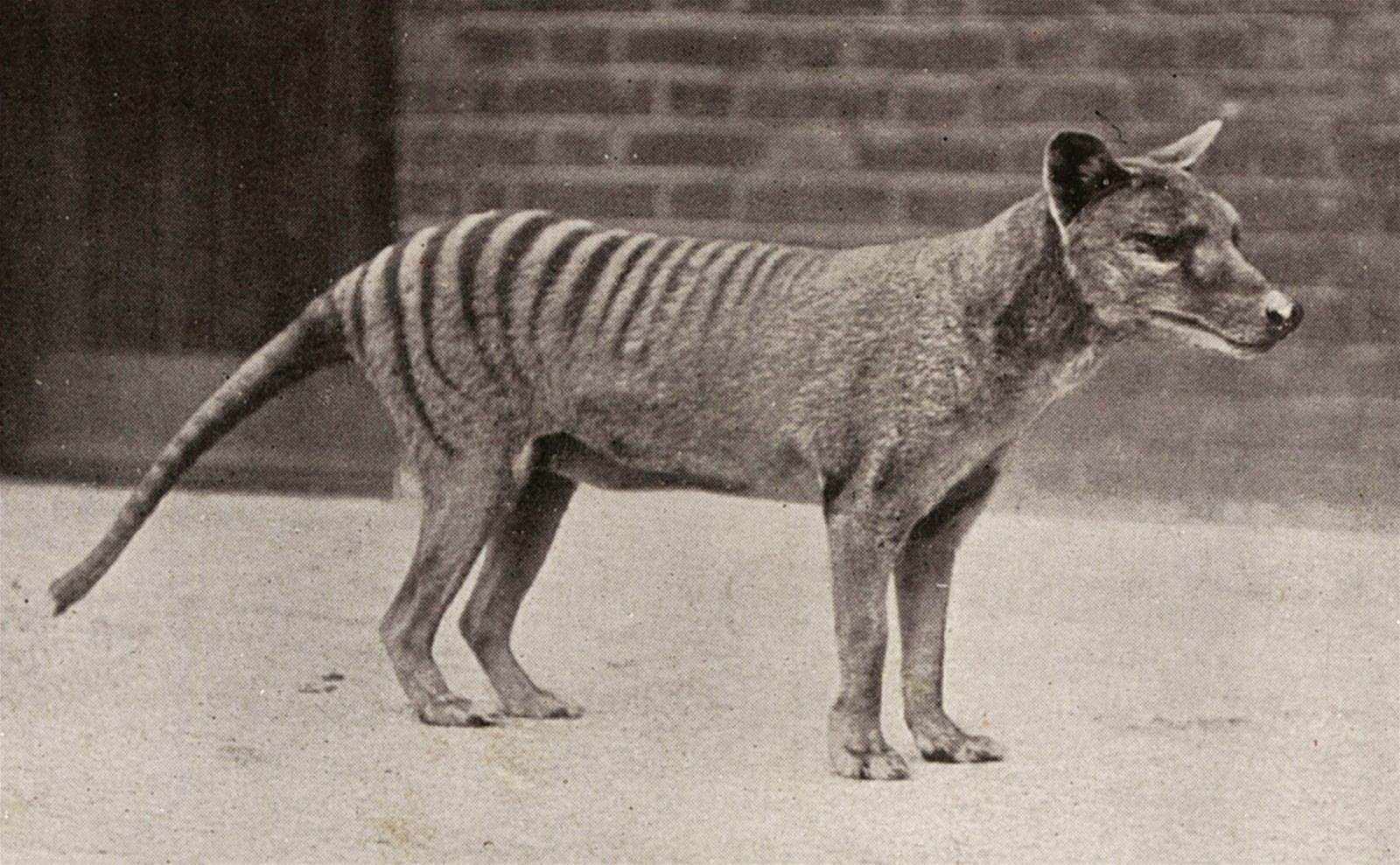
A Tasmanian tiger, or thylacine (Thylacinus cynocephalus) in captivity, circa 1930
© Alamy / Hebrew University of Jerusalem / NASA, Korea Aerospace Research Institute, Arizona State University
Scientists have extracted RNA from a Tasmanian tiger, marking the first time this molecule has ever been sequenced in an extinct animal. Like DNA, RNA (ribonucleic acid) carries genetic information. But instead of having a double strand of nucleotides as DNA does, RNA is made of a single strand. That makes it more likely to degrade over time and harder to extract from long-dead tissue. But understanding RNA is necessary for learning about the biology of an animal. RNA is the intermediary that translates DNA blueprints into the proteins that build cells; it also regulates cellular metabolism.
RNA “gives you a glimpse of the real biology, of how the cell was metabolically working when it was alive, right before the cell died,” said Emilio Mármol Sánchez, a postdoctoral researcher at the University of Stockholm. This is particularly interesting for Tasmanian tigers, or thylacines (Thylacinus cynocephalus), carnivorous marsupials that lived in Australia until about 3,000 years ago, when the mainland population died out and the only survivors were left on the island of Tasmania. These survivors were driven to extinction by human hunting and trapping; the last known individual died in a zoo in Hobart, Australia, in 1936. Despite being marsupials, thylacines were dog-like; this represents a case of convergent evolution, in which two distinct lineages yield an animal with a lot of similarities, likely because it fills an ecological niche.